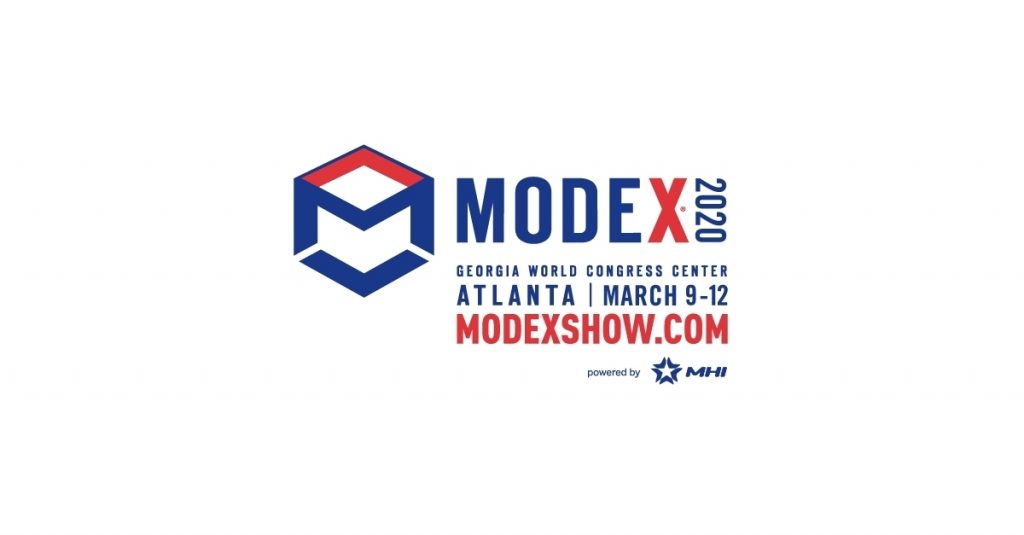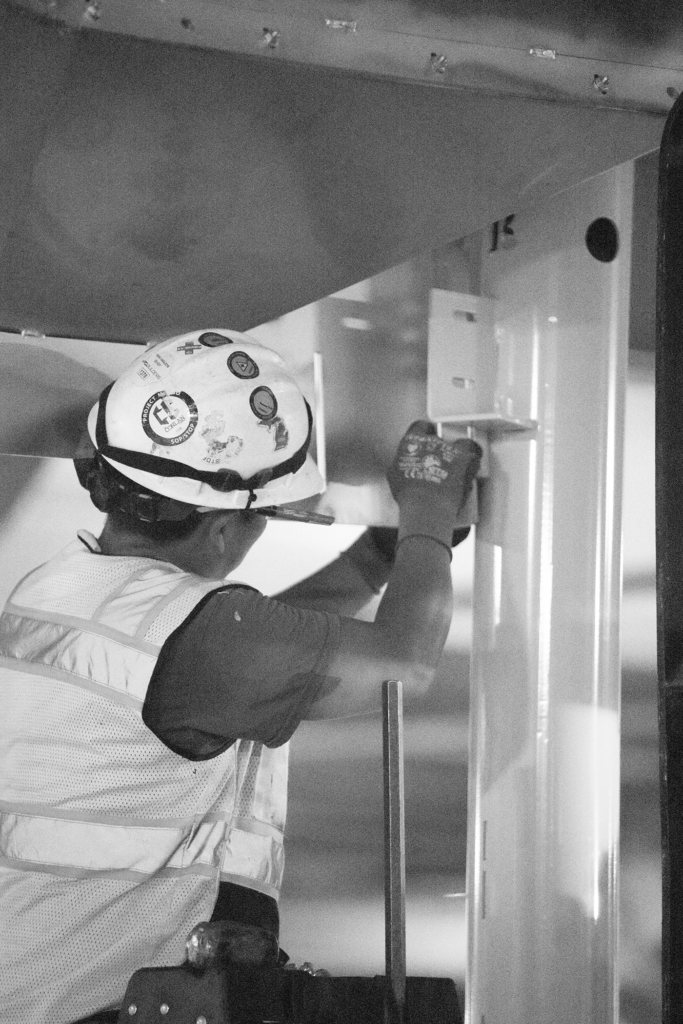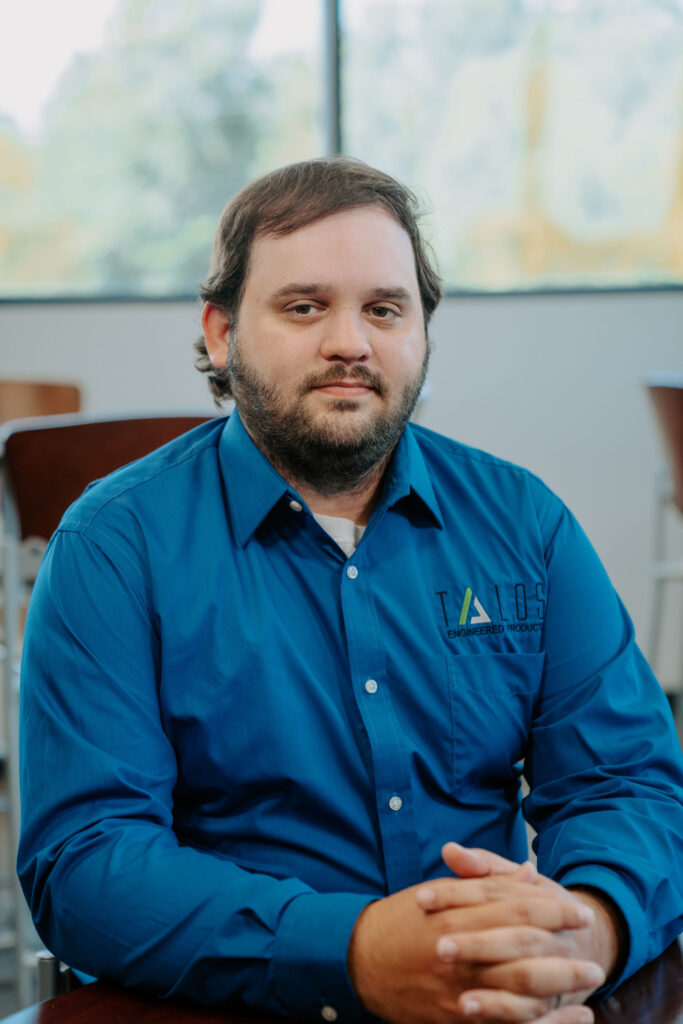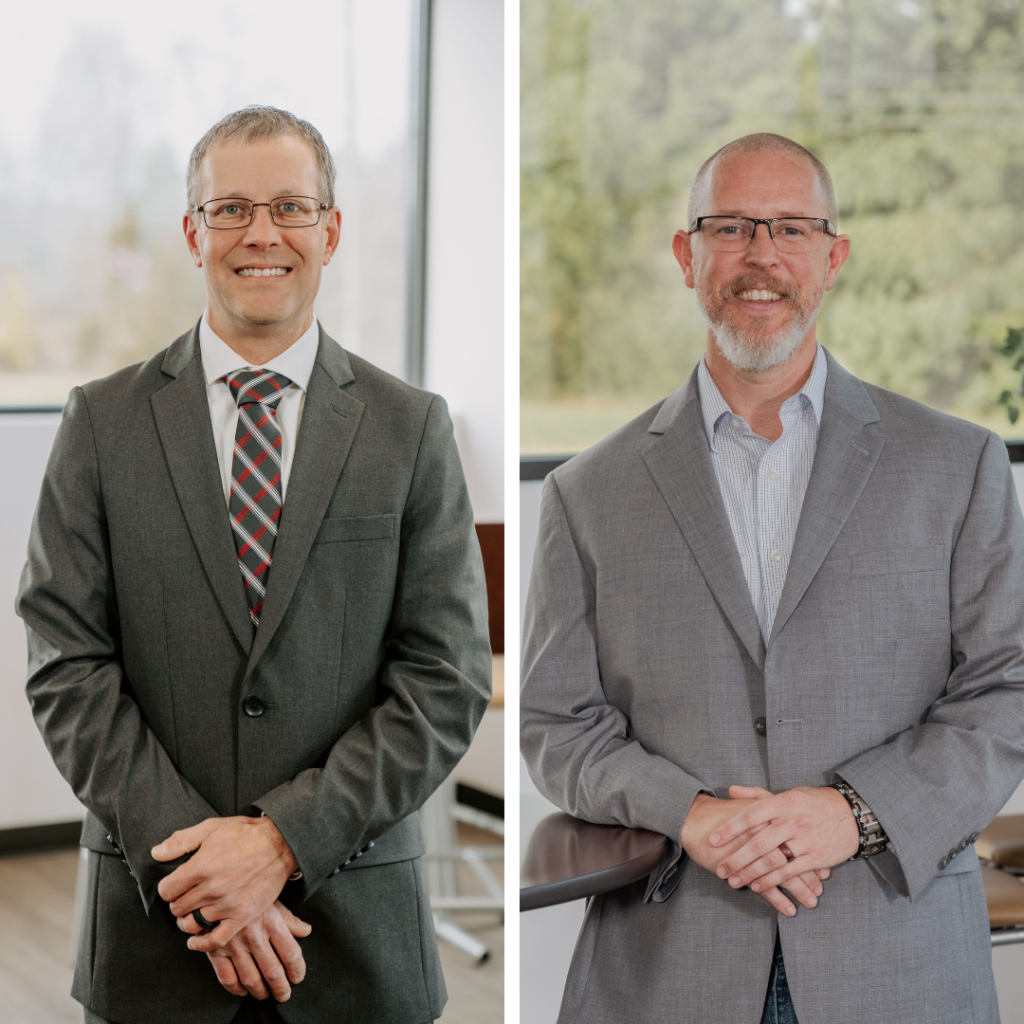
TALOS’ PRIORITIZES EMPLOYEE SAFETY AS A KEY PART OF OUR CULTURE AND COMMITMENT TO QUALITY
The safety of our employees has always been a priority for TALOS Engineered Products. As a manufacturer of innovative material handling equipment and solutions, the quality and construction of our products rests primarily on the talents of our skilled workforce. An on-the-job accident or injury to one of our people at either of our facilities in Lewisburg or La Vergne, Tennessee, hurts us all. It’s a key part of our company culture.
That said, we haven’t always had the most spotless of safety records. Back in 2014, when I stepped into the newly created role of Safety Manager, TALOS was a small company that was growing quickly. With an influx of new employees who were still learning our operations, equipment, and facility, we were averaging one injury every two weeks.
My first step to overcoming that lack of familiarity was to institute a new employee safety orientation. This hour-long session covers a variety of topics about how to remain safe in our facilities and on the job, as well as information required by the Occupational Safety and Health Administration (OSHA).
Additionally, we took advantage of OSHA’s On-Site Consultation Program for the first time in late 2015 (and again in 2019, as well as later in 2021). This program helps small- to mid-sized businesses like ours by sending consultants to evaluate our operations. They identify potential workplace hazards — mechanical, physical, and environmental — and assess our current safety programs. At the end of two days, the OSHA consultants make recommendations for ways to improve our processes and better protect our employees.
A S.T.A.R. Is Born
One of the OSHA consultants’ recommendations from their initial assessment was for TALOS to develop a proactive safety program. The concept is to reward our people when they identify and report a situation that could potentially hurt themselves or their colleagues (as opposed to a reactive program that addresses a safety issue after someone is injured). That’s when we created the S.T.A.R. Program, which stands for “Safety Threats Are Recognized.”
Here’s how it works: When an employee observes an unsafe condition or an unsafe act, they fill out a form describing their observation and concern, then submit it to me. I review the form, then assign an internal champion to perform a root cause analysis, identify a corrective action, and put it in place. Then, I inspect the modification and ensure that the safety issue has been appropriately addressed.
For example, when a worker determined that one of our conveyors was being used to transport heavier loads than it was engineered to handle and appeared to be on the verge of collapse, they submitted a S.T.A.R. form. I assigned our maintenance team to champion a solution; they replaced the conveyor with one that had the higher capacity required to safely move products.
Another S.T.A.R. form identified a trip hazard where two cords were constantly laying across the floor, including one that grounded a welding lead. I directed our manufacturing engineering team to resolve the issue, which they did by rerouting the cabling so it was no longer on the floor.
Even I have submitted a S.T.A.R. form and assigned myself to champion the solution! While on a plant tour at another facility, I noticed that every forklift was equipped with a light that projected a blue spot on the floor several feet ahead of the load. In a noisy operation, where horns and other audible warning devices might not be clearly heard, adding a visual cue gives pedestrians an additional alert to the approach of a forklift. Seeing the blue light warns them not to step in the vehicle’s path. I ordered these devices for all of our forklifts — because there’s no penalty for stealing someone else’s safety ideas.
Another way we ensure the safety of our workers is through internal audits. I’ve assembled a “Safety Team” of eight shop floor employees who work across a variety of different departments and areas throughout our operations. Periodically, two or three of them will visit a different area outside their own and observe the process. They fill out a checklist to document any equipment, situation, or action they consider potentially unsafe, then discuss it with the workers in that area.
Because their approach comes from a place of concern for their colleagues’ safety, the discussion is both positive and respectful. Often, workers in an audited area comment that they appreciate having a fresh pair of eyes that might notice something — such as a cord across the floor that could pose a trip hazard — that had become part of the scenery. If both the Safety Team and the workers in the audited area agree that a safety concern exists, a S.T.A.R. form is completed, and the issue promptly addressed.
The Results: Significantly Fewer Injuries
Since we started the S.T.A.R. Program, more than 250 forms have been submitted. Thanks to the observations of our people, our injury rates have dropped significantly — even as TALOS has grown tremendously (from 60 people when I started in this role to more than 220 across both facilities). Correspondingly, the metrics we report to OSHA have also improved significantly. In 2019, for example, we had 2.5 OSHA Recordable Injury Rate, considerably lower than the industry average of 3.9. Also in 2019, our OSHA DART (Days Away, Restricted, or Transferred) rate was 1.3, also lower than the industry average of 1.9.
That said, improving safety is never done. To date in 2021 we’ve had 70 S.T.A.R. forms submitted that we’ve addressed. That’s 70 opportunities for injuries that were prevented by our own people as they proactively work to protect each other.
What does this mean for our customers?
Well, aside from the fact that at TALOS we believe it’s incredibly important to make sure our people go home daily in the same shape they arrived, we’ve also noted that emphasizing the importance of following safety protocols directly correlates to our people following our quality and productivity protocols. That ensures our innovative solutions are always manufactured to the highest quality and as efficiently as possible.
Further, our emphasis on safety has been noted by our insurance carrier. As our lost time injury rates have fallen, so have our insurance rates. Those are cost savings we are able to pass on to our customers as well.
And, not incidentally, prioritizing safety has made TALOS an employer of choice in our community. Like most companies in the U.S., we’re not immune to the effects of a particularly challenging job market. Our local reputation, however, has helped us to fill open positions more rapidly than other operations in our area and other competitors in our market. With more employees on our team, we can fill our customers’ contracted orders more effectively, reducing lead time to delivery.
Our emphasis on continual improvement in safety ensures that our customers benefit from premium products made by people whose company cares for them, and who care about each other. It truly is a foundational part of our culture.
Want to learn more about our proactive safety efforts? I’m happy to share more details about just one of the ways TALOS sets itself apart from other conveyor manufacturers and suppliers. Contact us
–Mark Rynearson
Safety
mark.rynearson@talosep.com




